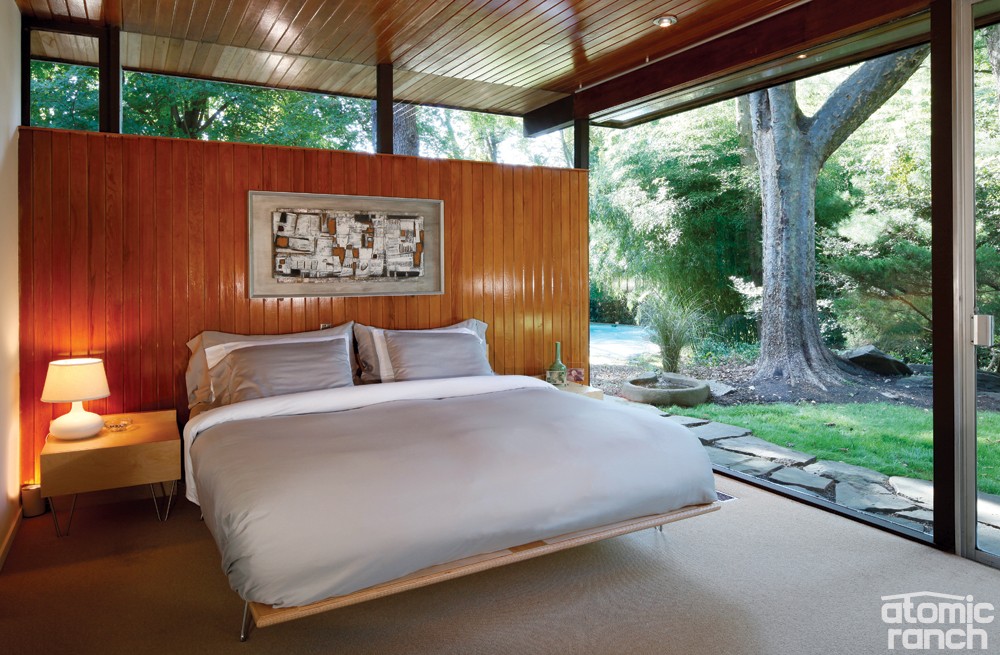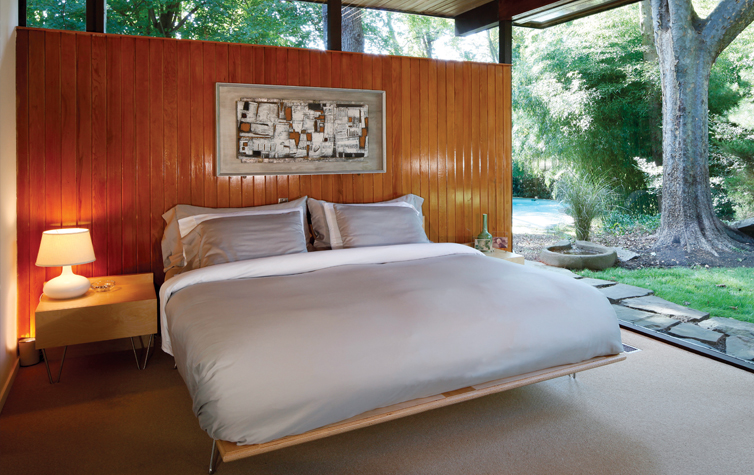
Wanting to revive the home but maintain Neutra’s vision (Part 1) , homeowners George and John, former residents of Palm Springs and admires of the Kaufmann House, dove into its original plans.
While researching the history, we found that Richard Neutra’s project manager was Thaddeus Longstreth. He managed many of Neutra’s projects, mainly those on the East Coast, but also the Palm Springs Kaufmann House and our new home. Longstreth’s files at the University of Pennsylvania’s Architectural Archives included floor plans, notes and photos of all the projects that he had worked on. We were able to procure copies of the original blueprints and about 200 photographs. They also allowed us to wear white gloves and personally view all of the file contents—an amazing experience.
In addition, the archives at UCLA provided us with copies of original correspondence between Neutra, Longstreth and the Hassricks. Those 100-plus letters reveal a conversation that covers all of the home’s details written in a wonderfully vintage tone. These became incredibly valuable resources for guiding us during our sympathetic restoration.
There has not been much written about the Hassrick House, and what does exist online is not very clear and can be somewhat negative. The story as we have researched it is this: In 1956 Kenneth and Barbara Hassrick hired Richard Neutra to build a modern home for the young newlywed couple. The Hassricks had read an article about Neutra in an issue of Time that featured his picture on the cover [August 15, 1949]. We understand, but cannot confirm, that the house was a wedding gift from Barbara’s wealthy parents. It was constructed on the grounds of the family’s expansive Philadelphia estate in East Falls, an area known as the childhood home of Grace Kelly.
Built in the International Style, the house was very typical of Neutra’s work in the ’50s and ’60s. Although the front is intentionally unpretentious and simple, upon entering
you are immediately struck by the living room’s 40′ glass wall that opens to the outdoors. The Hassricks requested the use of salmon-colored Bethayers concrete block; as far as we know, this is the only house Neutra ever built using this color. Tongue-and-groove
ceilings, a fireplace pulled forward from the wall, and a kitchen open to the living room are other typical Neutra elements and signature features of this home.
The Hassricks had definite opinions on what they wanted, which ultimately included a second workshop for Ken, a metal artist, and a garage (the original house had a double carport) for two Bugattis. [Those were a 1937 Type 57 Ventoux coupe and a Type 57C drophead coupe for you automotive enthusiasts.—ed] Neutra designed a garage with sleeping space above, and soon after, local architect Irwin Stein was engaged to build a 900-square-foot, gable-roof workshop/studio. Although some have criticized this addition, it is part of the home’s history and was intentionally positioned so that it is not visible from the front elevation.
Better than the Kaufmann House?
Now that the house was becoming a home, George and John turned their attention to the interior. Read more about the amazing stories of the original pieces discovered inside in Part 3!












